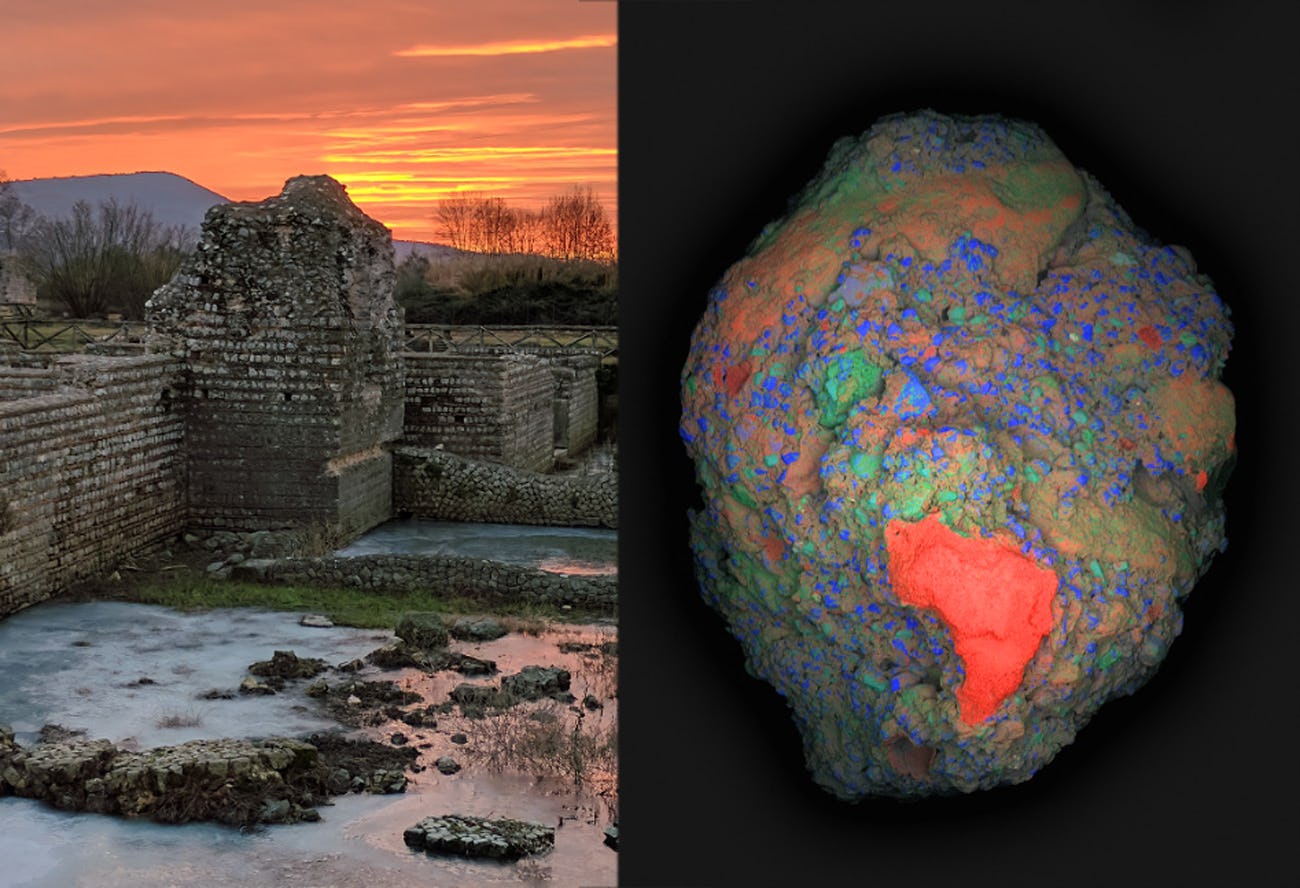
If you had to guess which industries drive carbon emissions around the world, obvious culprits like transportation and industrial farming probably come to mind. But you may not know that another major source sits literally beneath our feet and contributes a whopping 8 percent of carbon emissions worldwide: cement.
Cement is a crucial component of concrete, a building block of modern civil engineering that’s often used to pave roads and construct buildings — but sustainable cement alternatives have proven difficult to find. So instead of forsaking concrete altogether, an ancient Roman trick could make modern concrete more sustainable, according to a new paper published in the journal Science Advances.

The scientists inspected samples of Roman concrete and found evidence of a technique called hot-mixing, which works by adding dry quicklime (burnt limestone) to a solution of water and volcanic ash. Hydrating the quicklime triggers a chemical reaction that heats the solution.
The MIT team then concocted a modern recreation of this concrete in the lab and showed that the material can heal itself from damage, Admir Masic, senior author on the paper and associate professor of civil and environmental engineering at MIT, tells Inverse.
These self-healing properties could reduce concrete’s carbon footprint by extending its lifetime, Masic says.
Here’s the background — Roman engineers created impressively tough concrete, which has not only survived into the modern age but was even used in settings that most modern materials can’t handle, like marine environments.
Researchers have studied Roman concrete for decades to try and crack their engineering secrets. In the process, they have uncovered crucial ingredients like volcanic ash, which can produce the critical reaction involved in both hot and non-hot mixing.

What’s new — This recent study reveals a concrete component that has hidden in plain sight: lime clasts. Lime clasts are lumps of lime involved in the hot-mixing process that could play a role in the concrete’s self-healing.
“We basically analyze these lime clast inclusions that are in every Roman concrete … and try to understand why they’re there and why we don’t have a modern analog,” Masic says.
Don’t get too excited, though: This finding doesn’t necessarily mean that hot-mixing is the definitive reason why Roman concrete was so durable.
“Roman concrete is incredibly complex and does not follow a single formulation for all construction types,” Linda Seymour, first author on the paper and a project consultant at an engineering firm, tells Inverse. “There is not a single universal mechanism behind the material’s longevity, but rather a collection of ongoing reactions that evolve the material over time.”
What they did — To determine the role hot-mixing played in making superstrong Roman concrete, Seymour and Masic’s teams began by analyzing 2,000-year-old concrete samples from an archaeological site just outside of Rome.
Using technologies like large-area scanning electron microscopy and X-ray diffraction, the researchers learned the composition of the lime clasts within the samples.

Then, the team put modern copy-cat samples of concrete to the test. They wanted to see how well the samples could heal a fracture when exposed to a constant deluge of water. When wet, the lime clasts dissolve and act as a source of calcium to fill pores and cracks in the concrete over time — sort of like the caulk materials used to seal gaps and cracks in windows.
What’s next — This research could take a number of future directions. For example, Seymour says the finding could help toughen up modern concrete in corrosive environments, like in underwater settings like piers and offshore oil fields.
“In modern concrete … we want to protect steel reinforcement from a corrosive environment,” Seymour says. “Every crack we can seal is a step toward a longer life for a structure.”
Masic says he’s also interested in examining other ancient engineering feats, such as Egyptian building technologies, to see where else hot-mixing techniques could be lurking — and other ways they could help today’s builders.







